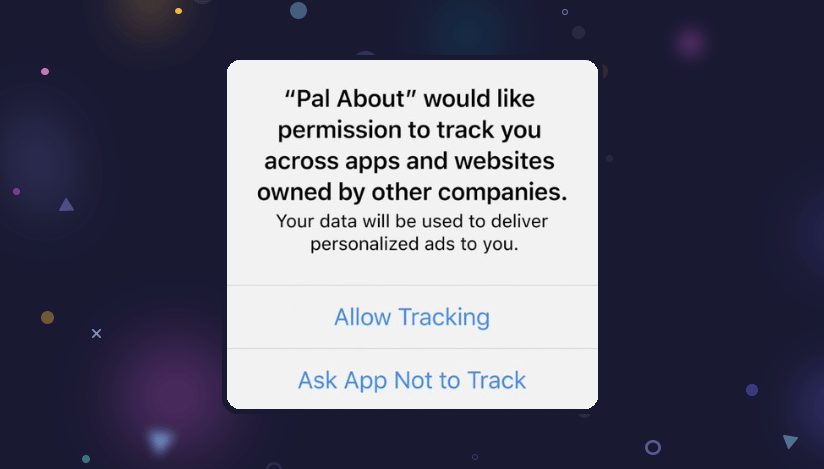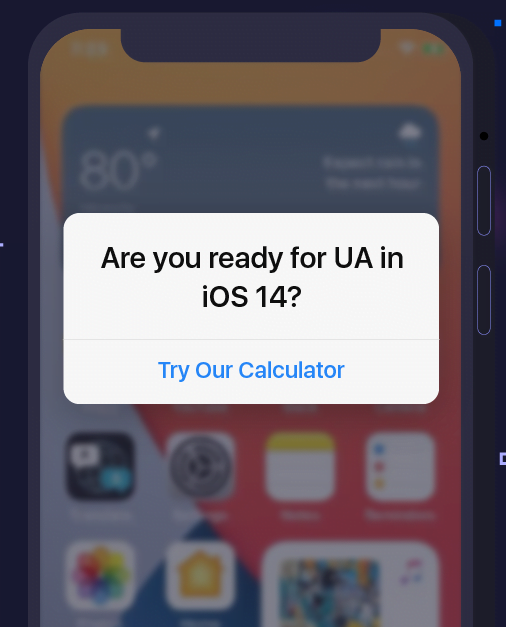Your source for everything mobile UA, from the basics to contentious standards, the glossary can help and inform both aspiring growth managers and experienced mobile app developers

Attribution
User Acquisition and Retargeting in iOS 14 -> Page 1 of
User Acquisition and Retargeting in iOS 14

Changes Following the Removal of the IDFA
Apple’s release of iOS14, scheduled sometime this fall (2020), is an update that will significantly change the Mobile Marketing industry. Aiming to protect the privacy of its users, Apple will now require publishers to show users to an opt-in dialog in order to have access to their IDFA (Apple’s identifier for advertisers), which used to be accessible by default (i.e., all devices had the IDFA exposed unless they actively chose to disable it in their device settings).

This change means that advertisers, DSPs, and attribution platforms now have to conform to the reality and work without a user-level identifier. This means performance can now only be measured on an aggregated level instead of user-level granular data.
Mobile marketing industry members should approach this change as if it applies to all iOS users and find solutions that work for them. With that in mind, users can still opt-in and make their IDFA accessible, which means old means still have some merit, depending on the actual percentage of users who’ll choose to consent.
For every new app they install, users would be presented with a screen allowing them to opt-in or opt-out of sharing their IDFA. Meaning, a single device can have different settings for different apps (something that wasn’t optional prior to the iOS 14 update).
Internal Data for Publishers
If at present, you rely on the IDFA for user segmentation, reports, and other user-level analysis in your internal data warehouse, you should make the move to the IDFV (Identifier for vendors). IDFV will stay viable for publishers to keep track of in-app activity.
If you make the move to the IDFV, make sure to update your data collection processes to use the IDFV as a new primary key for user segmentation in your systems (such as in postback templates, API pulls, etc.).
Attribution in iOS 14
Attribution will change significantly. Attribution platforms, on their end, can use tools such as fingerprinting and probabilistic matching, based on reports from the ad networks’ side (which are based on the SKAdNetwork reports).
All attribution reports will be delayed since Apple won’t be sending real-time postback data. The reports are going to be received between 24-48 hours after the app opened or a conversion value was reached. Apple’s delayed reporting is another means to prevent attempts to relate these reports to in-app activity and use it to identify users (i.e., it’s another privacy measure).
Fingerprinting and probabilistic matching is not new to attribution platforms and have been in use to track users that enabled LAT (Limited Ad Tracking). LAT users used to count as a substantial minority of iOS users, but there were still efforts to track their activity (without compromising their identity).
SKAdNetwork
SKAdNetwork is the new way of attribution methodology on iOS 14 for DSPs, attribution platforms, and advertisers alike. It provides no user-level data (guaranteeing users privacy), and its funnel differs from the old way that included the IDFA and relied mostly on MMP SDKs. Whereas IDFA postbacks were sent through the attribution platform, with SKAdNetwork, the information is reported through the device.
SKAdNetwork install attribution will allow tracking click-through attribution for in-app mobile ads only. The information provided will include:
- Publisher ID – allows for transparency as to the source of the click.
- Campaign ID – provides added values such as the creative used, ad placement, and other possible identifiers, according to the buyer’s discretion, and limited to 100 ids.
- A first time or a returning user indicator – signifies whether the user just downloaded the app for the first time or re-downloaded the app after uninstalling it in the past.
- A personalized conversion value – An unsigned 6-bit value. The app or the ad network determines the meaning of the value. The default value is o. It can be used for in-app event tracking. For instance, it can represent a stage in the game that the user reached, or the duration of the user’s session.
SKAdNetwork won’t include the following:
Retargeting in iOS 14
Running a retargeting mobile campaign targeting users who opt-out of the IDFA, with the information known to us at this moment, will be impossible. Retargeting relies solely on the ability to identify users’ devices and their previous actions in the app.
With limited events reporting and campaign-level data, retargeting, deep-linking, and tracking user-level performance is, unfortunately, no longer a viable option.
The exception to this rule will be publisher-level cross-promotion and retargeting campaigns. As a publisher with multiple apps that can employ the IDFV to its primary key to track its users, it’s possible to target these users inside the publisher’s apps. In-app users data is still available through IDFV, and running retargeting campaigns between same-publishers apps to re-engage dormant users, who are active in these other apps, is still an option.
It’s a limited option, depending on the number of users, their activity in those other apps, and the scale such a campaign can offer, nevertheless, it’s worth noting that it’s an option that would exist.
Fraud in iOS 14
Apple uses cryptographic verification to verify the attribution. This verification is claimed to be unforgeable and should enable install verification without compromising user privacy.
While these statements are contradictory, fraudsters, like life, find a way. Since this is an entirely new way of attribution, and there are no unique identifiers, the issue of fraud is still in question. Without transparency, it seems like options that were just recently extinct have reopened, and the possibility of abusing the data with tools such as click flooding is still viable.
The question of fraud has been raised and discussed in relation to iOS 14, and the only conclusion, for now, is to be as cautious and aware of the possibility of it popping up due to the adamant nature of fraudsters.
Mobile Marketing and Programmatic Targeting in iOS 14
Contextual Targeting
Contextual targeting has been a key factor in targeting prior to iOS 14, and with the change in iOS 14, it’s going to take an even more prominent role in UA campaigns. Contextual targeting can be done in different ways, but the basic idea is to understand how to target users based contexts they usually engage with. For example, if a user is currently playing a match3 game, they’d be targeted with a similar game from the puzzle genre.
The context is deduced through the use of different technologies that impact its accuracy. In our case, we use an ML algorithm called Word2Vec. The idea behind it stems from the understanding that the user’s current location (the app the request is from) is pretty much the only indication of the users’ interest (i.e., the app the users are currently active in is an app that they enjoy using). It should be dissected and analyzed to its maximal capacity. Ostensibly, W2V makes a direct comparison between the App Store’s description (in which the ad would be shown) and the promoted app, to measure their contextual distance from one another.
Frequency Capping
One of the most prevalent nuances in advertising is finding the balance between showing an ad enough times to drive users to engagement (in case of performance) or be remembered (in case of branding) but not showing it too much so as to not to become a nuisance. It’s referred to as “The Rule of 7” in marketing, which, of course, went through an adaptation when it came to mobile advertising and the overwhelming amount of content available.
The basis stays the same – enough, but not too much. Setting frequency capping (the number of times a user sees an ad within a set time frame) is not an issue when targeting at the user level and relying on a unique identifier. However, when it comes to the campaign, aggregated level, it’s harder to set, measure, and enforce.
In an effort to increase conversions and not impose your ad on the same users too frequently, frequency capping is essential, especially when done somewhat blindly. Instead of using user-level data, users are grouped under known identifiers such as their location, device models, and usage times. Then the group is set with a frequency cap that is carefully calculated, considering it’s estimated size.
Closing Thoughts
The removal of the IDFA from iOS 14 is a big change that’s shaking up the mobile growth ecosystem. Still, the industry, as it usually does, will evolve to adapt to these challenges. Mobile marketers need to seek out trusted and vetted partners who are quick to adapt to changes and work with them through this change.
